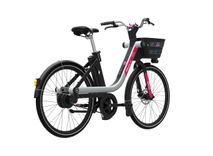“Cycling projects an image of health and prosperity and is a serious alternative to the automobile for short trips as the engine of urban economic growth and public health”.
Many cities have invested in - or are currently exploring - bike-sharing solutions for their citizens to get more cars off the road and, subsequently, to improve air quality, alleviate congestion and make cities more peaceful on the whole.
Cities face a major challenge when seeking to launch or improve their bike-sharing scheme.
Improving accessibility & inclusivity
In French cities with bike-sharing schemes (excluding Paris), less than half of inhabitants live a 10-minute walk away from a self-service station. This is one of the most mature bike-sharing markets.
One of the goals of bike schemes is to solve the ‘first’ and ‘last mile’ problem; as the figure above suggests, this is not the case for half of citizens.
To make the service convenient, we need to improve availability for users: when they need a bike, they should have access to one.
The challenge: investment costs
Cities are doing their best to make bike-sharing as inclusive as possible. In the town centre, building stations is not a problem. Population density is high and this is where bikes have the most demand, culminating in the most number of trips per bike per day - which justifies the investment.
Historically, however, it has been to be more difficult to find the financial balance in the suburbs. Usage may be inferior to that of the city centre (although this yet to be proven), and fleet reallocation efforts - which ensure that enough bikes are available in the right place at the right time - are more demanding than in city centres.




